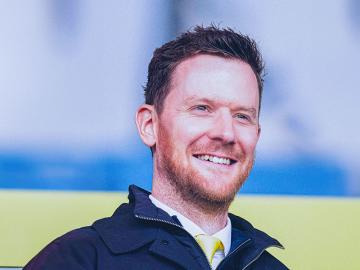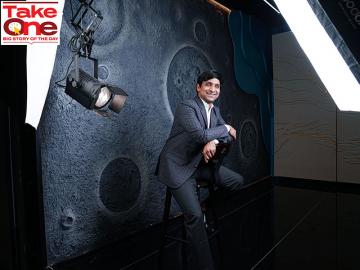
"It is a commercial means, but fundamentally there is a social goal"
SKS Microfinance founder Vikram Akula talks about his model to overcome the three constraints of capital, capacity and cost that stand in the way of scaling up the reach of microfinance
SKS Microfinance, once a small not-for-profit — it had a mere 2,000 borrowers in 2001 — is now on the verge of becoming the first-ever micro finance institution (MFI) in India to go public.
When you came back to India in 94-95, how did running the MFI programme for an NGO help you set up SKS later on?
I ran this MFI programme and what was wonderful about that is, first hand I got to see the tremendous impact that microfinance gets to make. I was basically managing a programme that was running in about 30 villages in Medak district in AP. Truly it’s a magical experience the way in which these women use the loans to transform their lives. Everything about it was a magical experience and I thought OK this is it, this is what I want to be doing. I did that for little over a year in the field. So what happened is one day, a woman from a more remote village — and this would happen to me quite often — would come and people would ask, ‘Can you start in our village?’
This particular incident with this woman actually changed my life, because when she came she was clearly quite poor and she had clearly walked quite a distance to get to where I was — emaciated, torn sari, just a bad situation and she basically said can you start this in my village? And I kind of knew the answer, but she was pleading so I said let me go back and ask at the office and they said look we don’t have funds to scale up. So I went back to this woman’s village and told her. She looked me in the eye and said am I not poor too?
And no one had asked me that question. And it really put me in my place, because here I was thinking I was doing something great, but what she made me realise is that if I’m only doing this in 30 villages, and I’m not doing it in a neighbouring village, effectively you are doing an injustice. It’s like if you have two children, you send one to school and hold the other one back. So I then left my NGO, went to the University of Chicago where I did my PhD and thought about her question, which is, how do you design microfinance in such a way that you never have to say no to any poor person who is simply asking for an opportunity?
What did you discover?
To understand what are the constraints in microfinance — why aren’t they scaling? And I identified three constraints, what I call the three Cs: Lack of access to capital — we were telling this woman we don’t have enough funds. The second thing we were telling this woman was we can only do this in x number of villages, we don’t have the ability to go beyond, so the capacity constraints. And then third, although not directly related to her question, was the high cost of doing microfinance. So I said OK, if those are the constraints, let me come up with a model that overcomes those constraints. And for me the answer was to use a commercial approach to overcome capital, use best practices from the business world to overcome capacity constraint — why is it that coke can scale, McDonald’s can scale but we can’t? And third, was use technology to overcome the cost constraints.
What lessons have you taken from Nobel prize winning, Mohammad Yunus’ Grameen Bank?
We’ve replicated the Grameen model. We’ve taken it and in terms of scaling, pushed it to a higher level by taking these three constraints and overcoming those. We didn’t have to invent the model of peer lending — that was pioneered by Grameen, and that was a critical innovation — because the first problem in lending to the poor is how do you give a collateral-free loan to a poor woman you don’t know, who has no credit history? To overcome that risk question, peer lending is a brilliant innovation. So we said, OK so the fundamental field level aspects of Grameen we don’t need to change. But the institutional, the system — capital, capacity, costs — that’s where I thought we could do something.
So I replicated the field level aspects, but really departed when it came to some of the institutional views. For example, let’s take the capital approach. Yunus believes that microfinance should be a social business, no profit no loss.
So we’ve got a very different view at SKS — our view is that we estimate the Indian market is something like Rs. 2.4 lakh crore on the debt side. Now if you need to raise Rs. 2.4 lakh crore, there’s no way you’re going to get that by saying social capital, no profit no loss. The only way you’re going to get that kind of money is by going to the commercial markets. And the way commercial investors look at microfinance, we would have to be not just profitable, we’d actually have to be extremely profitable. Because how do they look at it? Subprime, unsecured, lending to poor women who have no credit history. So we have to be more profitable than real estate, telecom and everybody else because of their perceived risk.
I’m making a social argument for as to why we should do that, I’m not saying anything about value monetisation. We have one goal, which is that poor woman I met many years ago, I can say yes, now you too can have an opportunity, how much do you need to start your business? So it is a commercial means, but fundamentally there is a social goal. That was the reason for founding SKS and that’s exactly what we do today.
Ten, eleven years ago how many bankers would have called to do business with me? It just didn’t happen. We’d have to go with a begging bowl. Today Forbes magazine comes to meet us — that shows this model has opened up the capital markets to the poor. That’s the fundamental difference between us and Grameen, and then if you say what’s changed, nothing at the core has changed. Because that impetus I had 11 or 12 years ago stays the same.
How do you maintain that social goal, that value addition for your customer when you’re growing at 200 percent? How do you carry that organisational culture across the country? And how do you do that when you also have to show financial profitability for your investors?
We don’t see conflict between the two. Fundamentally our organisation is about creating social value for our customers. I don’t even look at the profit lines. If you ask me the ratios ROE, ROA, I don’t know those things. It doesn’t matter to me what happens — what matters to me is that there’s social value. But I am confident that if we create social value, it will create financial value to our investors and this is the reason why. So first off, how do we create social value? In everything we do, we’re looking at the customers first. Does this work for the member, whether it’s a product, whether it’s a procedure, whether it’s a process?
We want our customers to be aware of the interest rates, the products and so on, and we spend a lot of time making sure they do so. Does that create financial value? No. The reason why we do that is because we want the customer to understand what’s happening and benefit from that process. So let’s take loan size for instance. Whether a customer takes a Rs. 2,000 loan or a Rs. 20,000 loan, [the] staff person gets the same financial compensation. Which means that his incentive is to say, ‘What does this woman need, and I’m going to do what’s right for her.’ And that’s how we create social value. Now our investors benefit from that in the following way:
The value for the investors is not the interest on the Rs 2,000 loan — that’s nothing. The value for the investors is when tomorrow she moves from 2 to 10 to 20 to 30 [thousand rupees] and stays with us — that’s when you create financial value. When she moves from one product to four products to five products. The value to the financial investor comes there. In order to create that later value to the investor, I need to have a customer who is extremely loyal to me. How do I make her loyal? By doing what’s right for her.
Regardless of the short-term profit or loss. For my financial investor I don’t say I’m creating social value, I say trust me, when she stays with us, you will earn financial value. That’s how the two come together. That’s why there’s no conflict. When Sequoia sits at the table with us or Sandstone sits at the table with us — they’re not saying raise the interest rates or raise the loan size, because they understand it’s not a short-term play, it’s a long-term play. That they will harvest greater profits in the future if we treat this customer right today.
If we don’t treat the customer right today, you undermine long term shareholder value. Every single investor understands that because we are in the fortunate position of being able to pick. There are some investors that don’t understand this, we just haven’t selected them.
Post Your Comment
Comments 1
-
 sayansen
sayansenit's inspiring story for new breed of entrepreneurs.loved it.plzz publish more such stories.hail social capitalism!
on Oct 5, 2009















